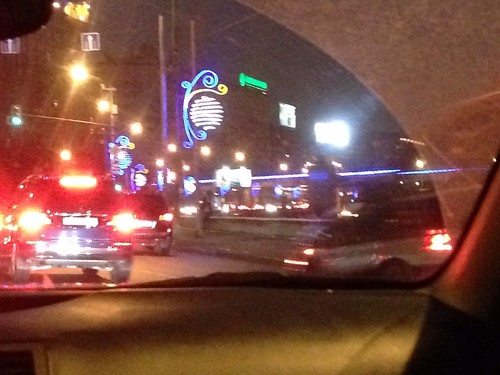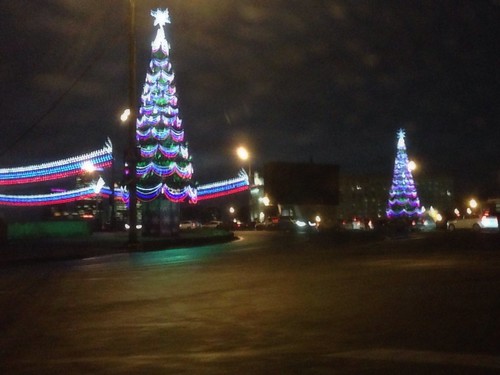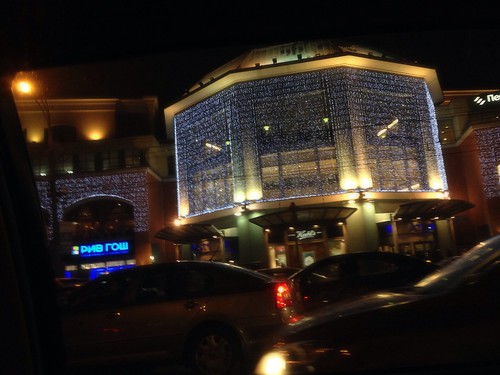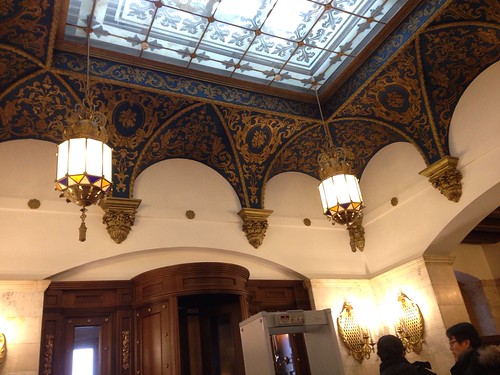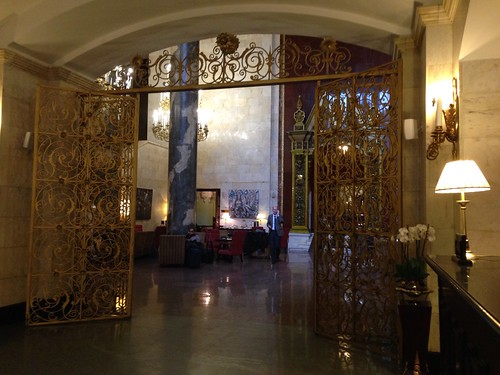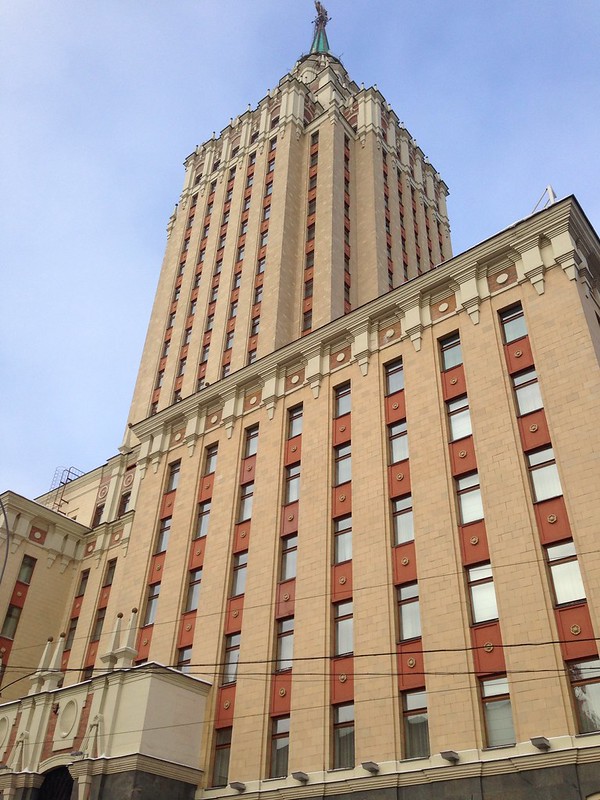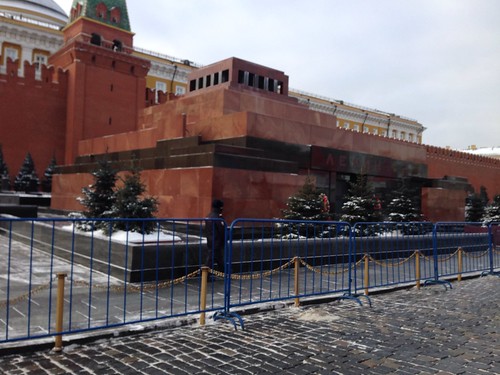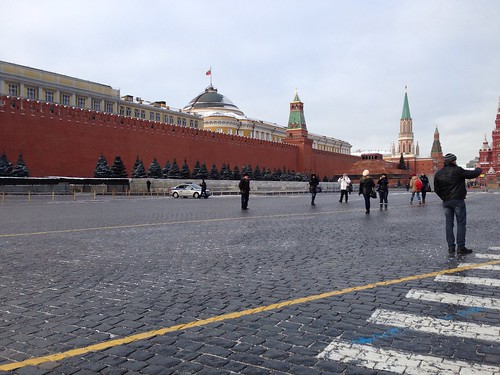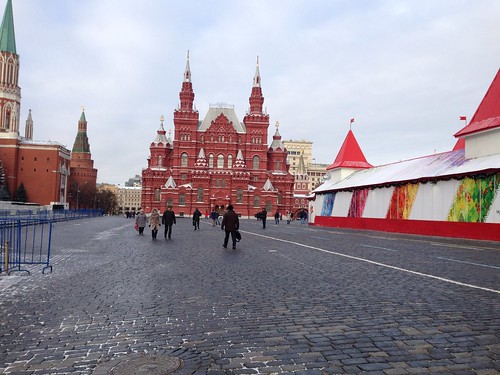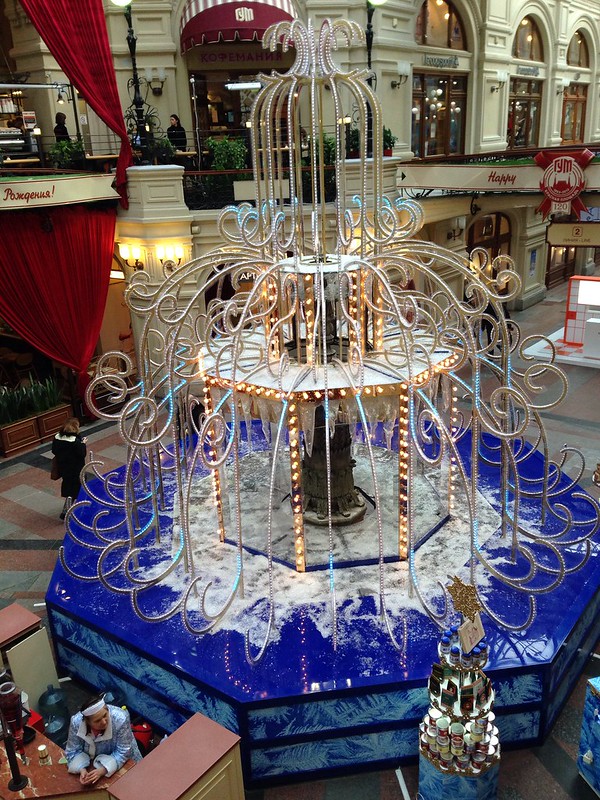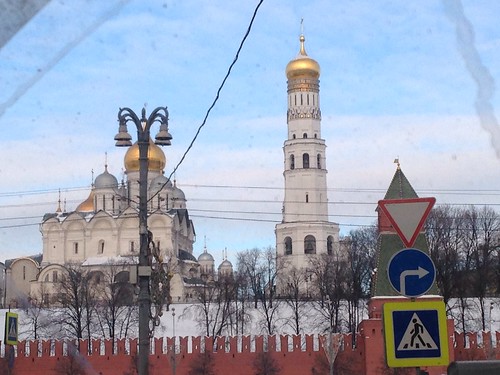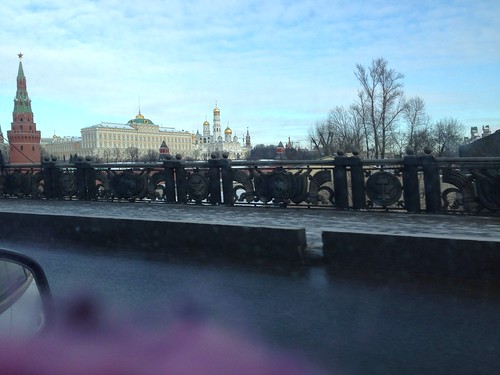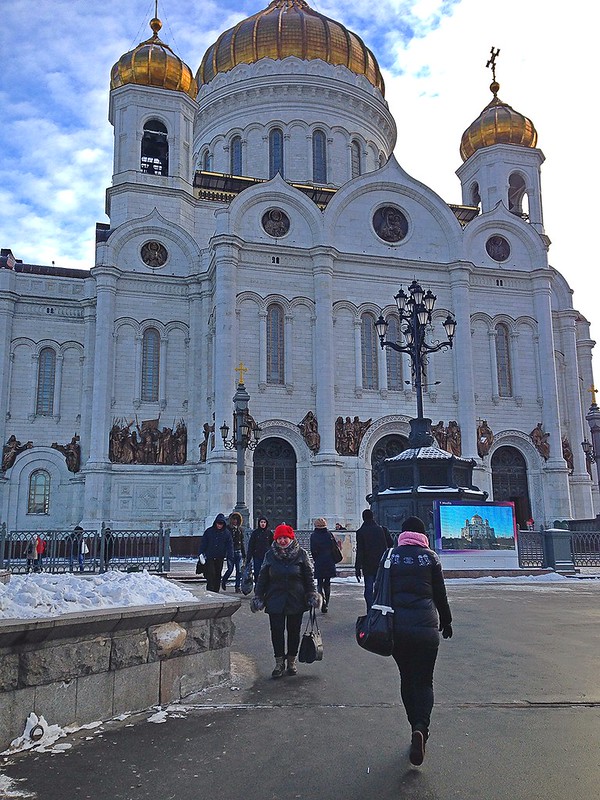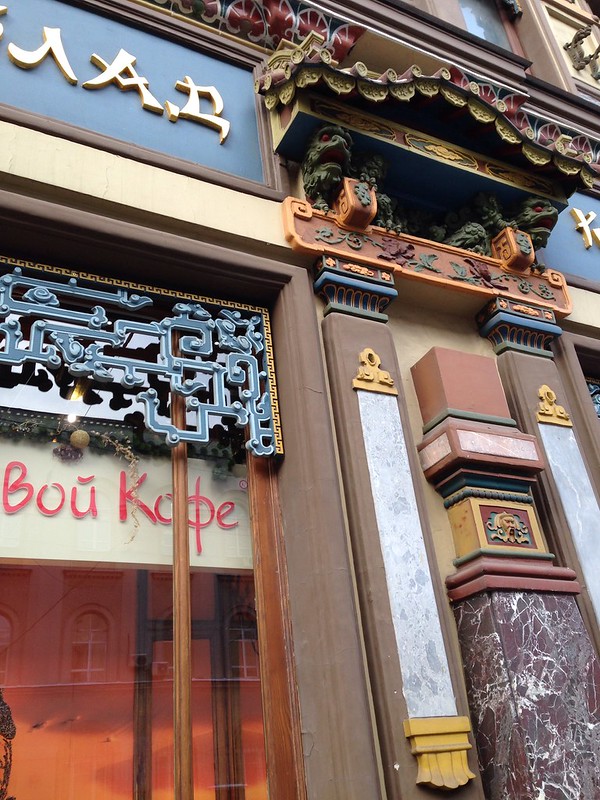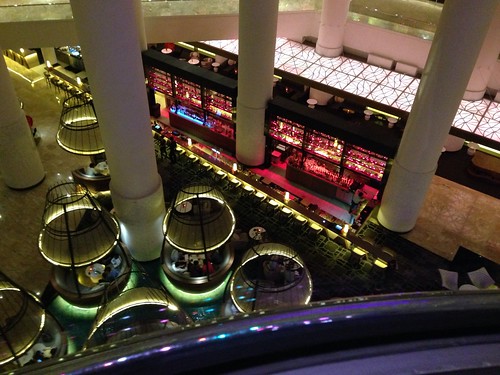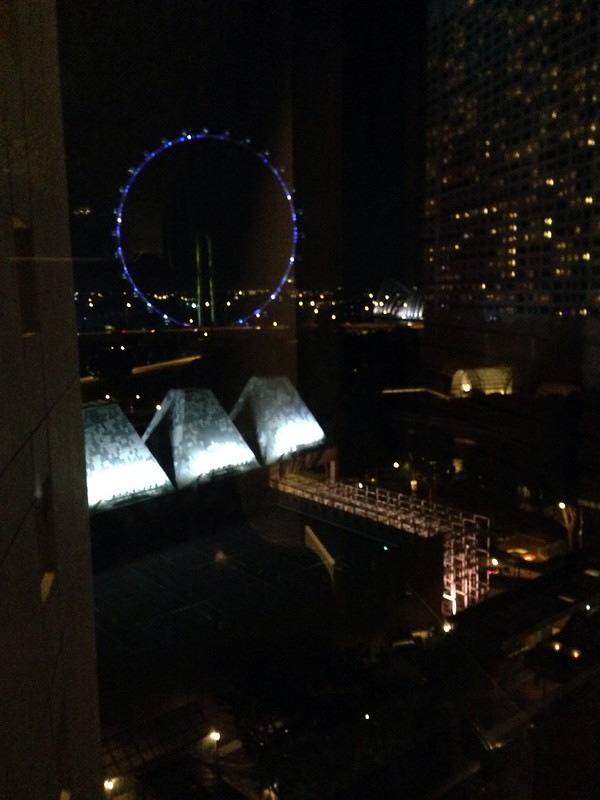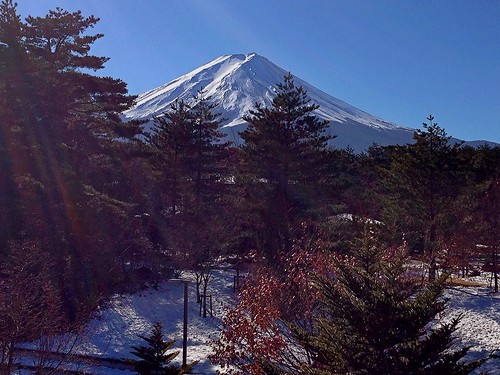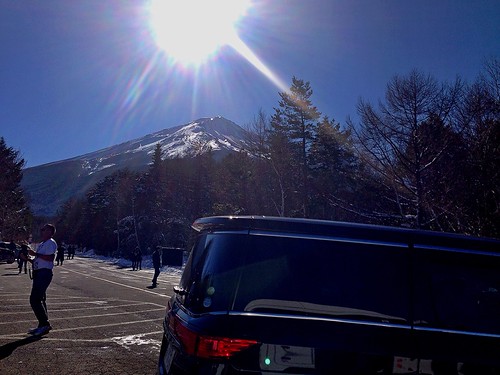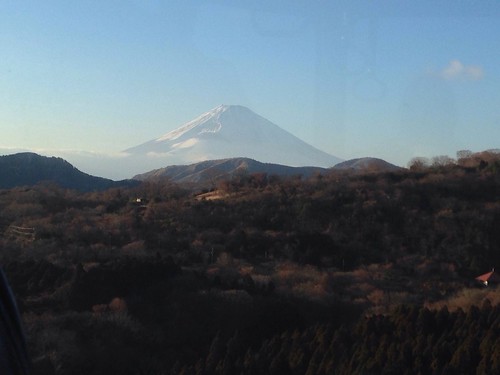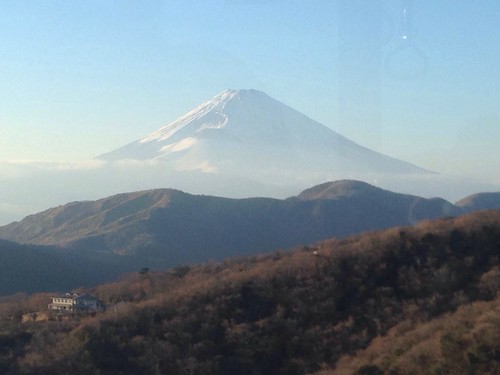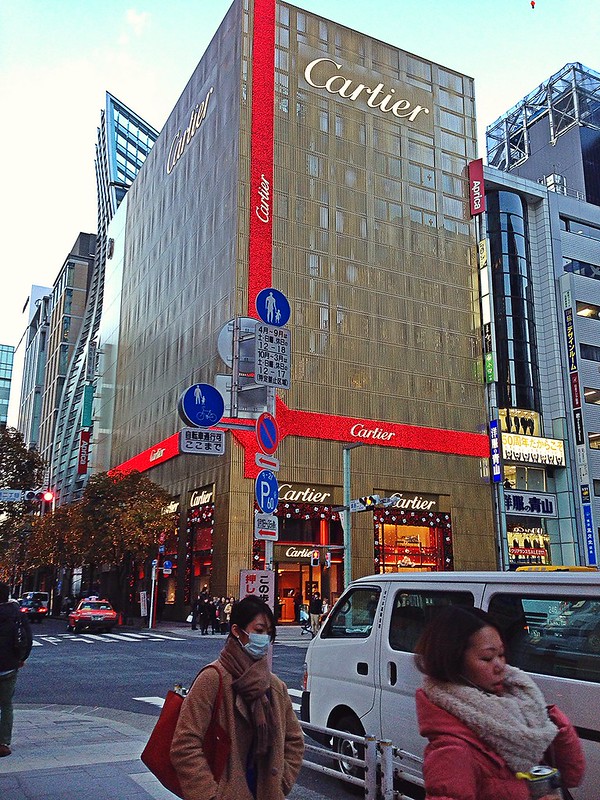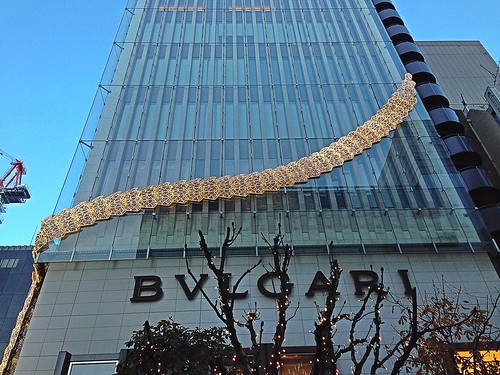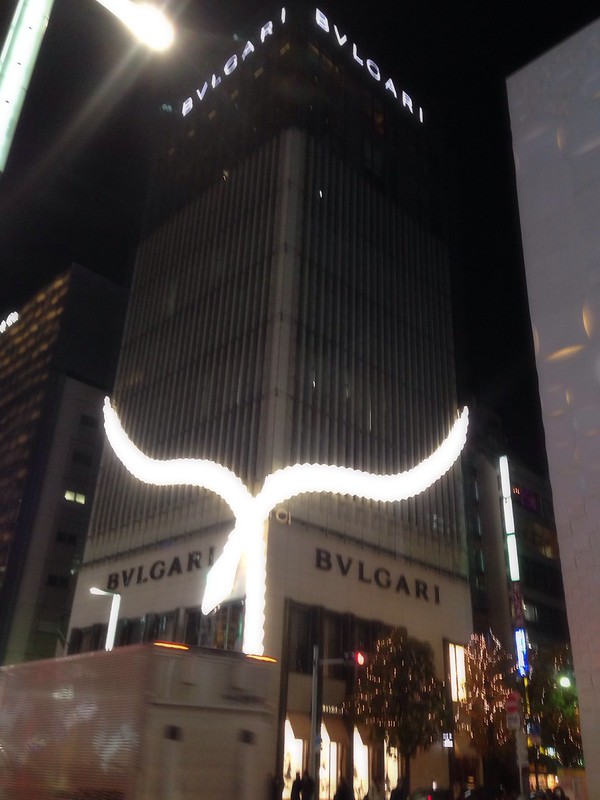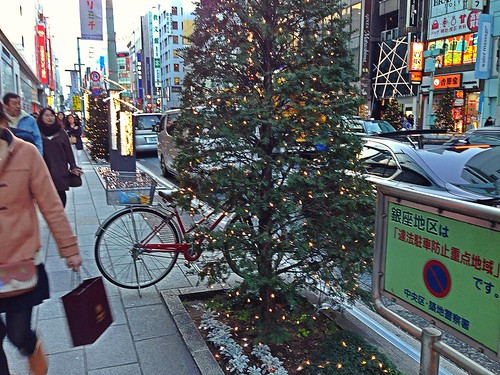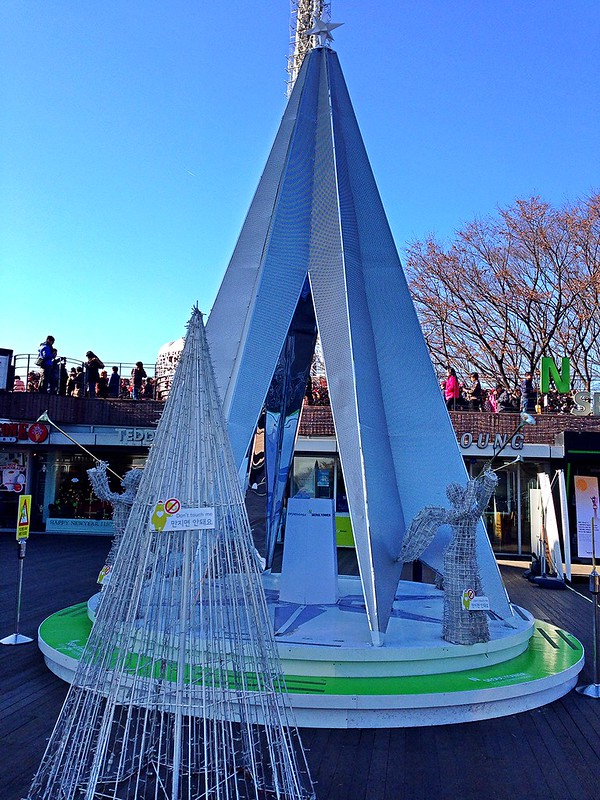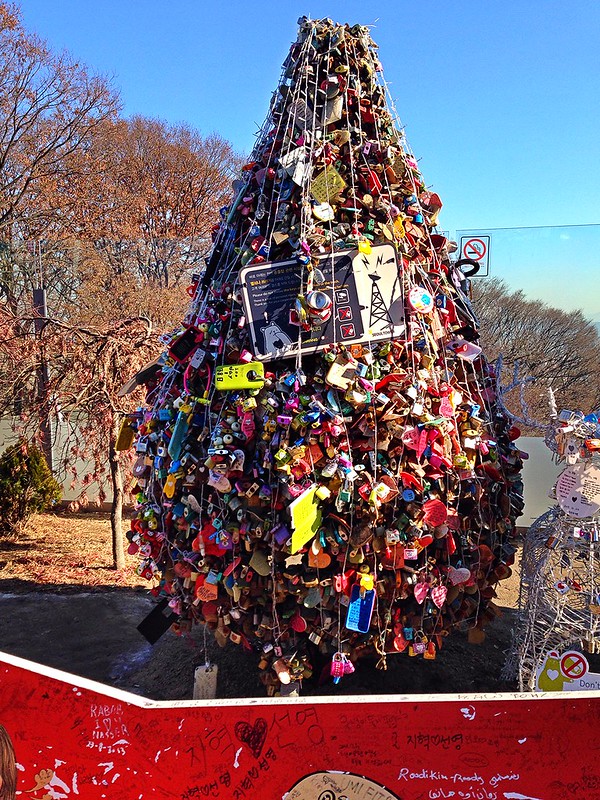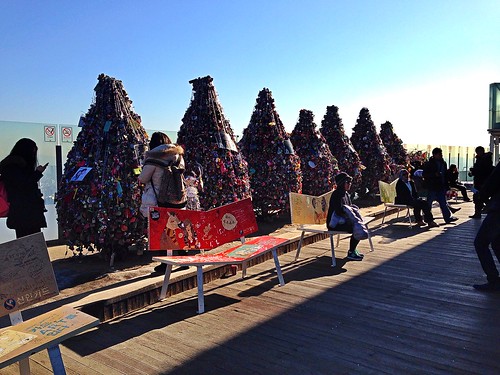Last week I had to go to Russia on a business trip. When I took this job, I knew Russia was in my territory and I might have to make a trip there. I told myself "avoid Russia in January and February". Well, apparently my self did not listen to me. I went to Moscow in January. It wasn't as bad as I expected but I also made a few tactical errors.
I arrived there around sunset. The clock is skewed in Russia. It doesn't get light until around 8 am but it stays light till 6 pm.
There is light everywhere. Christmas decorations are still up. There are giant Christmas trees in every square.
At first, all I did was go to work and back. I saw lots of lights and the inside of my hotel. As it turns out, my hotel is a historic building. In the 1950s or so, Stalin built 7 skyscrapers. They are called the Seven Sisters. My hotel is one of them. Two are hotels, two are apartment buildings, two are government offices and one is a university. I saw all seven of them but I didn't take photos of all. You will see a few today.
I was puzzled at the old world glory of the hotel lobby, and even of my hotel room. It was rather large by today's standards. The fittings were quite modern the only give away was the size. The lobby reminded me of hotels I had visited in my youth. Later, when I found out about the history of the building, all was explained.
This is the hotel lobby ceiling and below you are looking into the lobby bar and the elevators beyond.
That is the outside of the hotel. It is the smallest of the skyscrapers.
This is the Radisson. I passed it every day morning and evening. It is the second hotel.
This is the university: Moscow University.
I was able to do a little sight-seeing on the last day. I had brought a Bohus sweater with me for warmth, along with my down coat and two pairs of gloves and the hat. However, at the last minute I exchanged my warm Viajante for an alpaca scarf thinking that the shawl and the Bohus would be too much. Wrong! The Bohus did very well in keeping my body warm but the scarf was not wide enough to protect my cheeks. I also had stupidly left the hood of the coat back home. That would have done the trick too. With the wind blowing, the 9 degrees Fahrenheit (high temperature for the day) was definitely the winner. But I persevered and saw many of the major sites from outside. I didn't have time to visit museums or go inside the Kremlin.
St. Basil's looks exactly as it does in photos except for the snow. One of its chapels is dedicated to St. Basil. The cathedral itself is wrongly called St. Basil's but that is how everyone refers to it.
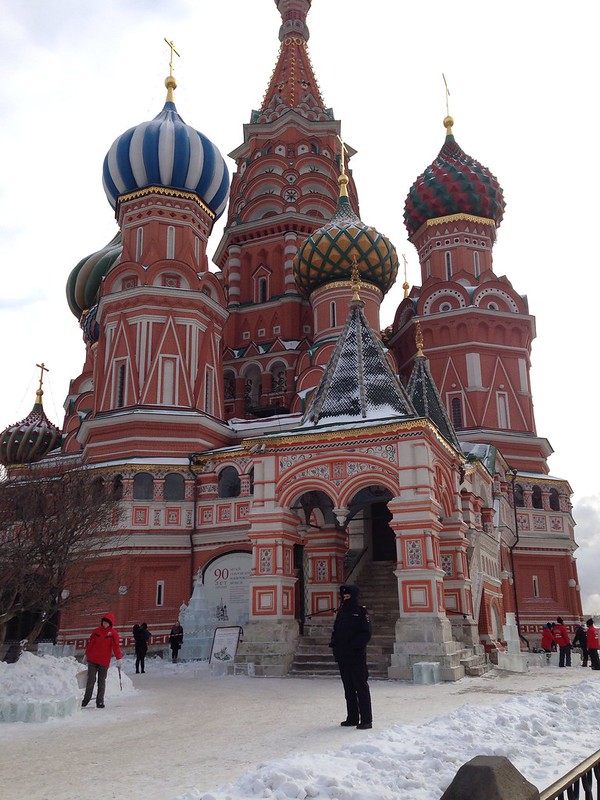
Lenin's tomb is in Red Square. Red Square itself is rather small compared to my imagination. I expected a much bigger square. I didn't go in to see Lenin's preserved body which is on display inside.
This is Red Square from one end, near St. Basil's. Lenin's tomb is in the far right of the picture bhind all the people. One of the advantages of visiting in winter is that there are only a few people around.
This photo is angled the other way. On the right is the GUM shopping mall, which is 120 years old. We'll go inside in a bit to warm up.
Here is a closer look at the far side of Red Square. The big tent on the right seems to be associated with some celebration but it wasn't clear what it was. On the far side is another cathedral.
GUM (pronounced Goom) is a maze of levels and walkways and bridges. It is full of very high end stores. The celing is all glass so it is light and airy inside.
This is one of the chandeliers from eye level on the second floor.
There used to be a fountain in the center which is being redone. So, for Christmas, they put up this structure covered in lights.
The Kremlin is a triangular island in the middle of the city. It contains a number of buildings, including the Armoury - which is a museum of Russian weaponry and state gifts and other pieces of art. I wasn't able to see it although it was on my short list of things to see. There are also two gorgeous churches in the Kremlin. The right hand side one is the Cathedral of the Annunciation where Russia's rulers were crowned. The other is the Cathedral of the Archangel Michael.
This is a view of the Kremlin from the other side. You can see the palace in the Kremlin as well as the Cathedral.
This is the Cathedral of Christ the Savior. It was torn down by the Soviet government (they put an outdoor swimming pool in its place) and was rebuilt in the 90's. But my guide said that it did not have the spirituality that comes from many prayers being said inside. She said it would take many years of prayer before the church would feel like a church. The Patriarch of the Church does conduct services here so it is just a matter of time.
In contrast, the monastery we visited next was a working monastery and had that aura of sanctity. There is a miracle-working icon here and Alexander Solzhenitzsyn is buried here. We visited his grave. As these are working churches, there are no photos of the glorious interiors or the iconography. When it is cold and dark outside for a large part of the year, one needs to fill the insides with color and beauty.
We finished our trip with a stop at Arbat street, a tourist shopping mecca. I needed to buy a fur hat for someone. There weren't too many tourists around and we found what we were looking for. But I was able to have a look at a traditional wooden house that was near by.
Stalin built a lot of very classical buildings. Many of them are still around and make Moscow very beautiful. They are a clear contrast to the concrete boxes of the later Soviet era.
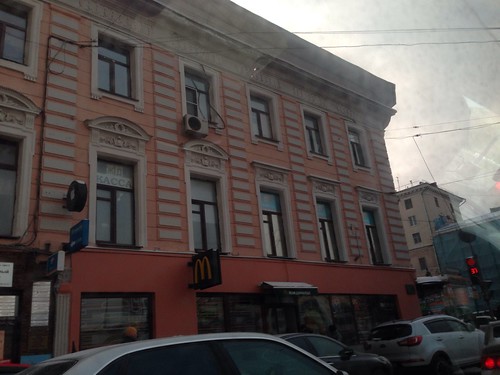
This is a lovely tea/coffee shop that has been in existence for decades. I couldn't get a photo of the inside or even of the whole outside. But you can see how these unique buildings stand out in an urban jungle.
One of the original residences from before the Bolshevik Revolution that has survived. There are a few of these scattered around that show how lovely the city was in those days - with estates and graceful buildings.
And last but not least, the Russian White House and another of the Seven Sisters. The Russian White House is a government office. It used to house the State Duma.
I worked on a Bonsai shawl with my Blackberry to Raspberry handspun gradient on the trip. I found some beads in my stash that are just perfect for the colors in the gradient. I am getting to the end of the violet section now, which is a little further that when this photo was taken. I've had to add repeats so I will use all the yarn.
I arrived there around sunset. The clock is skewed in Russia. It doesn't get light until around 8 am but it stays light till 6 pm.
There is light everywhere. Christmas decorations are still up. There are giant Christmas trees in every square.
At first, all I did was go to work and back. I saw lots of lights and the inside of my hotel. As it turns out, my hotel is a historic building. In the 1950s or so, Stalin built 7 skyscrapers. They are called the Seven Sisters. My hotel is one of them. Two are hotels, two are apartment buildings, two are government offices and one is a university. I saw all seven of them but I didn't take photos of all. You will see a few today.
I was puzzled at the old world glory of the hotel lobby, and even of my hotel room. It was rather large by today's standards. The fittings were quite modern the only give away was the size. The lobby reminded me of hotels I had visited in my youth. Later, when I found out about the history of the building, all was explained.
This is the hotel lobby ceiling and below you are looking into the lobby bar and the elevators beyond.
That is the outside of the hotel. It is the smallest of the skyscrapers.
This is the Radisson. I passed it every day morning and evening. It is the second hotel.
This is the university: Moscow University.
I was able to do a little sight-seeing on the last day. I had brought a Bohus sweater with me for warmth, along with my down coat and two pairs of gloves and the hat. However, at the last minute I exchanged my warm Viajante for an alpaca scarf thinking that the shawl and the Bohus would be too much. Wrong! The Bohus did very well in keeping my body warm but the scarf was not wide enough to protect my cheeks. I also had stupidly left the hood of the coat back home. That would have done the trick too. With the wind blowing, the 9 degrees Fahrenheit (high temperature for the day) was definitely the winner. But I persevered and saw many of the major sites from outside. I didn't have time to visit museums or go inside the Kremlin.
St. Basil's looks exactly as it does in photos except for the snow. One of its chapels is dedicated to St. Basil. The cathedral itself is wrongly called St. Basil's but that is how everyone refers to it.

Lenin's tomb is in Red Square. Red Square itself is rather small compared to my imagination. I expected a much bigger square. I didn't go in to see Lenin's preserved body which is on display inside.
This is Red Square from one end, near St. Basil's. Lenin's tomb is in the far right of the picture bhind all the people. One of the advantages of visiting in winter is that there are only a few people around.
This photo is angled the other way. On the right is the GUM shopping mall, which is 120 years old. We'll go inside in a bit to warm up.
Here is a closer look at the far side of Red Square. The big tent on the right seems to be associated with some celebration but it wasn't clear what it was. On the far side is another cathedral.
GUM (pronounced Goom) is a maze of levels and walkways and bridges. It is full of very high end stores. The celing is all glass so it is light and airy inside.
This is one of the chandeliers from eye level on the second floor.
There used to be a fountain in the center which is being redone. So, for Christmas, they put up this structure covered in lights.
The Kremlin is a triangular island in the middle of the city. It contains a number of buildings, including the Armoury - which is a museum of Russian weaponry and state gifts and other pieces of art. I wasn't able to see it although it was on my short list of things to see. There are also two gorgeous churches in the Kremlin. The right hand side one is the Cathedral of the Annunciation where Russia's rulers were crowned. The other is the Cathedral of the Archangel Michael.
This is a view of the Kremlin from the other side. You can see the palace in the Kremlin as well as the Cathedral.
This is the Cathedral of Christ the Savior. It was torn down by the Soviet government (they put an outdoor swimming pool in its place) and was rebuilt in the 90's. But my guide said that it did not have the spirituality that comes from many prayers being said inside. She said it would take many years of prayer before the church would feel like a church. The Patriarch of the Church does conduct services here so it is just a matter of time.
In contrast, the monastery we visited next was a working monastery and had that aura of sanctity. There is a miracle-working icon here and Alexander Solzhenitzsyn is buried here. We visited his grave. As these are working churches, there are no photos of the glorious interiors or the iconography. When it is cold and dark outside for a large part of the year, one needs to fill the insides with color and beauty.
We finished our trip with a stop at Arbat street, a tourist shopping mecca. I needed to buy a fur hat for someone. There weren't too many tourists around and we found what we were looking for. But I was able to have a look at a traditional wooden house that was near by.
Stalin built a lot of very classical buildings. Many of them are still around and make Moscow very beautiful. They are a clear contrast to the concrete boxes of the later Soviet era.

This is a lovely tea/coffee shop that has been in existence for decades. I couldn't get a photo of the inside or even of the whole outside. But you can see how these unique buildings stand out in an urban jungle.
One of the original residences from before the Bolshevik Revolution that has survived. There are a few of these scattered around that show how lovely the city was in those days - with estates and graceful buildings.
And last but not least, the Russian White House and another of the Seven Sisters. The Russian White House is a government office. It used to house the State Duma.
I worked on a Bonsai shawl with my Blackberry to Raspberry handspun gradient on the trip. I found some beads in my stash that are just perfect for the colors in the gradient. I am getting to the end of the violet section now, which is a little further that when this photo was taken. I've had to add repeats so I will use all the yarn.
